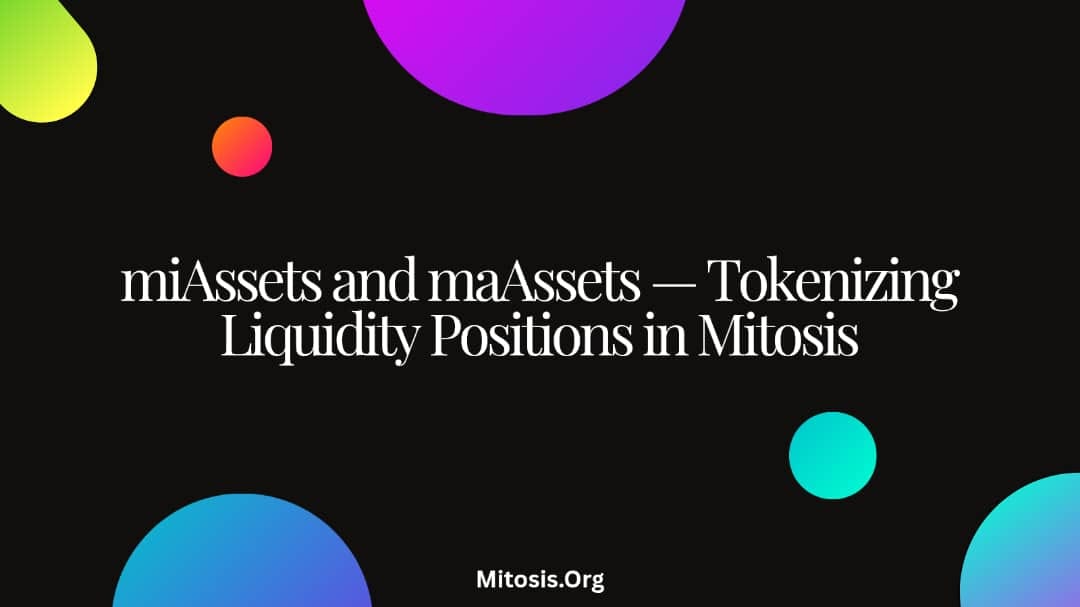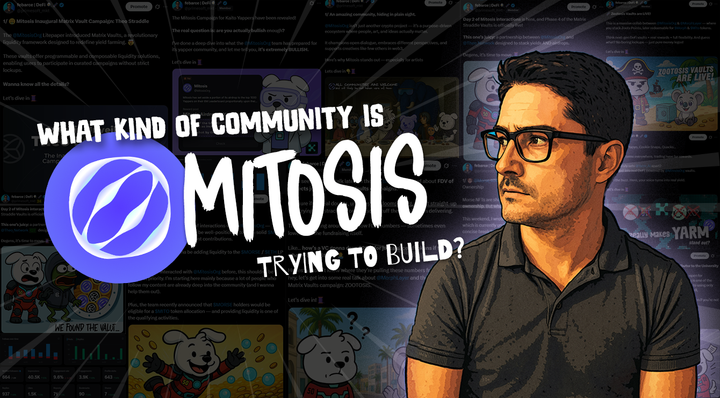miAssets and maAssets — Tokenizing Liquidity Positions in Mitosis

The backbone of modern DeFi has long been LP tokens, representations of staked capital within a specific pool or vault. But traditional LP tokens are static, non-composable, and often chain-locked, preventing them from playing in the broader yield arena. Mitosis flips this design on its head through its asset abstraction layer, introducing miAssets and maAssets, primitives that unlock composable, yield-bearing, interoperable liquidity across chains.
This isn’t a UX gimmick. It’s foundational infrastructure that turns vault shares into powerful financial instruments, making them as usable as stablecoins or ETH, while encoding yield, governance access, and strategy exposure directly into the asset itself.
1.0. From Representation to Utility: What Are miAssets and maAssets?
At its core, Mitosis operates a multi-vault architecture that spans multiple chains. LPs can deposit assets like USDC, ETH, or BTC into Mitosis Vaults, which then execute yield strategies across chains via modular integrations.
When a user deposits into a vault:
- They receive a miAsset — a Mitosis Intermediate Asset — representing their ownership in that vault.
- Over time, this miAsset increases in value as the vault generates yield.
- It’s fungible, transferable, and usable across the broader DeFi stack.
But it doesn’t stop there.
Mitosis then introduces maAssets — higher-order tokens that aggregate multiple miAssets. For example, an LP could deposit into a cross-chain, cross-strategy USDC pool and receive maUSDC, which abstracts yield from multiple underlying vaults. maAssets allow users to hold a diversified, yield-bearing token that reflects their position across the entire ecosystem.
This layered design ensures every liquidity position within Mitosis is represented not by a static token, but a programmable asset.
2.0. Enabling Composability and Capital Efficiency
Traditional LP tokens are often siloed — locked in single protocols, hard to integrate, and rarely used beyond their source vault. But miAssets and maAssets are designed to be:
- Composable — usable across lending, staking, bridges, DEXs, and derivatives.
- Fungible — enabling shared liquidity across users, protocols, and chains.
- Interoperable — through Hyperlane, they move permissionlessly across chains.
This makes LP positions no longer passive, but productive and dynamic. A user could take miETH, use it as collateral in a lending protocol, or swap maUSDC on a DEX. DAOs could hold maAssets as a treasury yield strategy, or protocols could design incentive structures around them.
Where traditional DeFi required LPs to choose between yield and utility, Mitosis creates assets that unlock both simultaneously.
3.0. Cross-Vault Logic and Redemption Mechanism
Underneath this simplicity is deeply intricate logic. Every miAsset is tied to a vault’s accounting, and every maAsset aggregates yield from multiple miAssets. This means Mitosis must automate redemption routes, vault exits, and bridging paths without human intervention.
It does so through:
- Cross-chain smart contracts that track position and yield in real-time.
- Automated redemption logic that routes withdrawals efficiently, even across multiple vaults.
- Transparent pricing mechanisms that calculate fair value at redemption.
The result: users can redeem maAssets for their underlying LP value, without needing to worry about slippage, manual bridging, or chain-specific mechanics. This abstracts away DeFi’s technical overhead, making capital more fluid.
4.0. The Bigger Picture: Modular Liquidity at Scale
miAssets and maAssets are not just tokenized wrappers, they are foundational pieces of a new liquidity stack. In a world where liquidity is increasingly multi-chain, strategy-based, and user-driven, these abstractions allow DeFi to scale without introducing friction.
Protocols can integrate them as a form of collateral, governance participation, or access control. LPs can hold them as yield-bearing savings products. Builders can use them as standardized primitives to launch new products on top of the Mitosis stack.
They’re not just representations of value. They are financial legos for the next evolution of DeFi composability.
Conclusion
In traditional finance, utility and yield rarely live in the same place. In Mitosis, they’re one and the same. Through miAssets and maAssets, liquidity becomes mobile, modular, and programmable positioning LPs not as passive speculators, but as active participants in the future of multi-chain DeFi.
This is what makes Mitosis more than a vault system. It’s a liquidity engine, and miAssets/maAssets are the keys to making it run at global scale.
Are you ready to be part Mitosis Community?


Comments ()